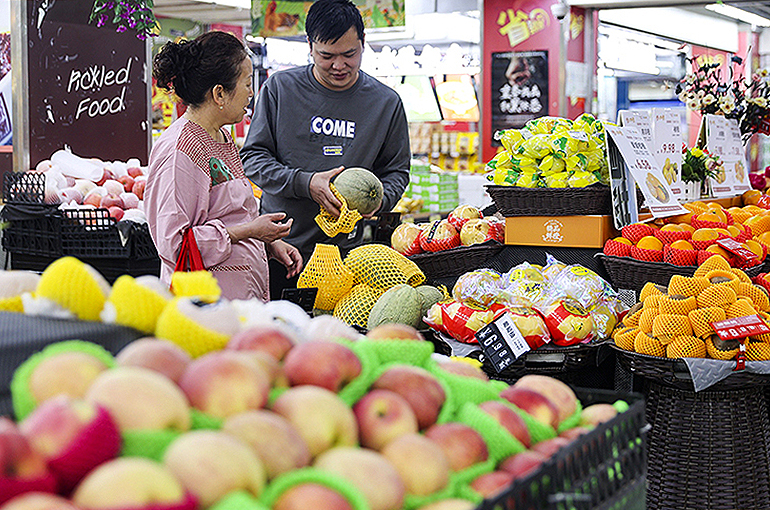 China’s Consumer, Producer Prices Fall at Slower Pace in September
China’s Consumer, Producer Prices Fall at Slower Pace in September(Yicai) Oct. 15 -- The declines in China’s consumer and producer prices eased last month, reflecting government policies aimed at boosting consumption and measures to restrict cutthroat price competition.
The consumer price index inched down 0.3 percent in September from a year earlier, according to data released by the National Bureau of Statistics today. An Yicai poll of chief economists had predicted a 0.2 percent decline. The CPI fell 0.4 percent in August after coming in flat in July.
With a series of government policies to expand domestic demand and lift consumption still working through, the consumer market is growing steadily and new consumption drivers are continuing to emerge, Pang Ming, a senior researcher at the National Institute for Finance and Development, told Yicai.
Excluding food and energy prices, which fell 4.4 percent and 2.7 percent, respectively, the core CPI rose 1 percent, marking the fifth consecutive month of inflation and the first time in 19 months that the growth rate exceeded 1 percent, according to NBS statistician Dong Lijuan.
The producer price index declined 2.3 percent from a year ago, the NBS data also showed, just as the surveyed chief economists had forecast. It was the slightest decline since February after a 2.9 percent drop in August and falls of 3.6 percent in both July and June.
Regulators have ramped up efforts to address chaotic low-price competition, sending a more positive signal on price movements, Pang said.
By industry, price declines narrowed by 8.3 percentage points for coal processing, 3.4 points for ferrous-metal smelting and rolling, 3 points for coal mining and washing, 2.4 points for solar equipment manufacturing, 0.5 point for battery production, and and 0.4 point for non-metallic mineral products, Dong said.
At the same time, prices in high-end manufacturing are firming up. Aircraft production prices rose 1.4 percent, while those for electronic specialty materials production, waste resources recycling, and wearable devices manufacturing moved 1.2 percent, 0.9 percent, and 0.1 percent higher, Dong said.
This quarter the decline in the PPI is expected to narrow to below 2 percent as a result of the year-earlier low base of comparison and ongoing measures to curb disorderly price competition and policies to steady growth, according to Feng Lin, executive director of research and development at Golden Credit Rating International.
Editors: Dou Shicong, Futura Costaglione